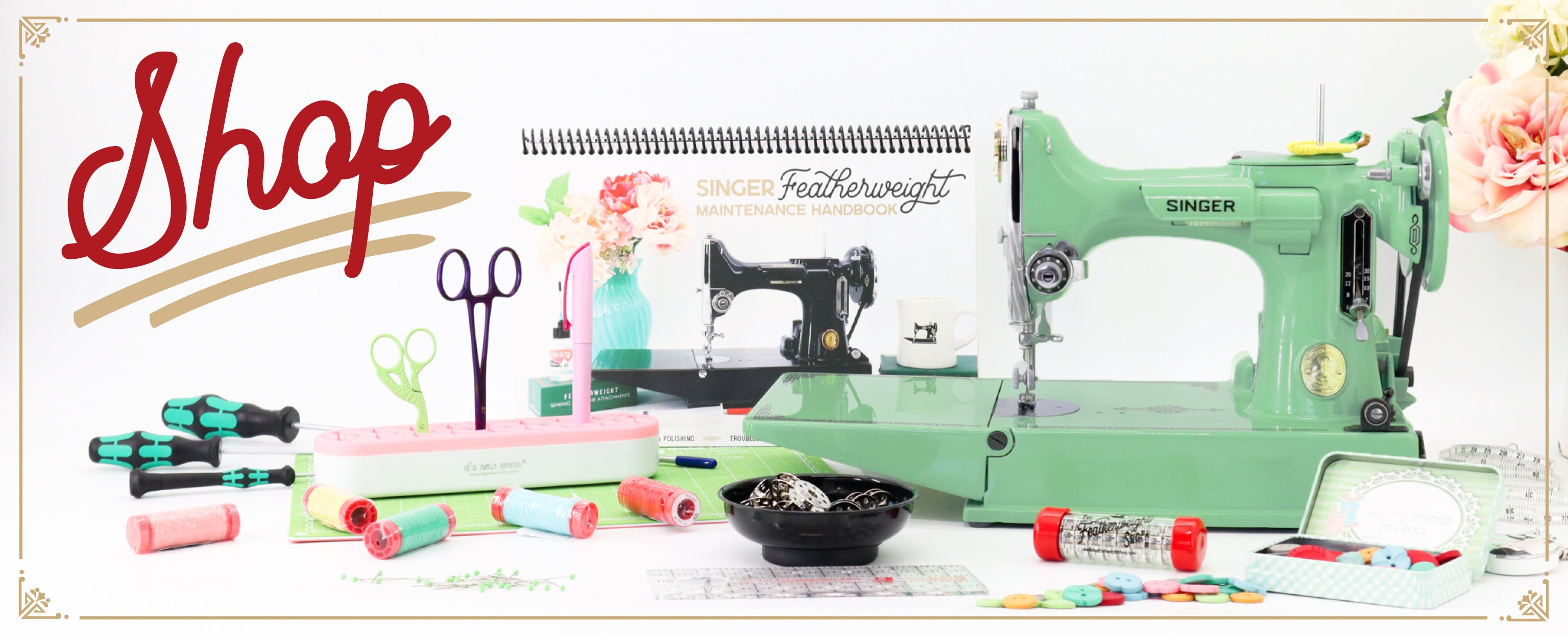How Thread Affects Maintenance, Upper Tension & Bobbin Tension
Hello everyone, Carmon here. There has been a lot of discussion about thread brands the last couple of days on our Singer Featherweight 221 & 222K Sewing Machines Facebook group so I thought I would weigh in. As a teacher of Featherweight Maintenance Classes and Workshops, and the owner of The Featherweight Shop, it is a general assumption that I should be able to get your machine sewing properly, regardless of what thread you choose to use. This is a fair assumption.
I was on the phone today with Dave and Sharon McCallum, who are dear friends of mine. My kids would consider them adopted grandparents, and we had a great time with them this summer when they joined us at Missouri Star Quilt Company for the Singer Featherweight Shop Retreat. Anyway, Dave and I were discussing his preference for Coats and Clark vs. my preference for Aurifil or Presencia. Now, both of us are completely capable of getting a good looking stitch out of either type of thread, so who is right? Well, we both are!
The real answer lies with tension. A high-quality thread like Aurifil needs to have the tension set with that particular thread in order to have a nice stitch. If you have your machine set up to sew with Coats & Clark and then switch to a smooth, fine thread like Aurifil, your tension will change significantly and your stitch formation will reflect this. Most of this has to do with the quality and length of fibers that compose the thread, but also the color dying process (but that will be a post for another day). As the bobbin thread passes under the bobbin tension spring and upper thread passes between the upper tension discs, the waviness and thickness of the thread (from the length of fibers in the thread) will affect upper and lower tension.
This is one of the main reasons we found it necessary to find an affordable bobbin tension meter to accommodate various brands and weights of thread. This meter allows you to easily adjust the bobbin case tension regardless of thread type, so don't be afraid of trying other thread brands and making the appropriate tension adjustments.
Also, don't forget that if you are using a cross-wound spool like most Aurifil, Presencia, Mettler, and Superior spools etc., it is necessary to use a Thread Stand.
These cross-wound spools are not designed to spin on the machine but are meant to feed the thread off of the top of the spool (or off the end when used in a machine with a horizontal spool pin). When these spools are forced to spin on the machine, however, the thread receives extra tension from the jerking motion of trying to get the thread spool to spin, and the end result shows up in your stitches. Picture more tension, less tension, more tension, less tension with each jerking motion. This is amplified even more with synthetic threads like polyester which have more stretch and elasticity.
So whatever thread brand you use, keep in mind that not all threads are created equal, but most all can be used in your Featherweight with the proper tension and thread feeding. The only thing you will need to consider now is what type of project are you working on? Is it heirloom? Will it be passed down to future generations? What is the fiber content of the fabric? As a general rule, you do not want the thread to be stronger than the fabric it is holding together. The reason for this is because a "popped" seam is much easier to repair than a "frayed" seam. For example, if you are using polyester thread on an all cotton fabric quilt, then each patch may be prone to fraying as it is used, laundered and loved over time... compared to a quick pop of a few threads breaking at the seam allowance (which you can easily and quickly repair by hand).
Our recommendation is to stick with a 50 wt. cotton thread. We personally use Aurifil 2-ply 50 wt. or Presencia 3-ply 60 wt. Cotton thread may have slightly more lint (again, more or less depending on brand and quality), but keeping a lint brush handy and giving your bobbin case area one drop of oil each time you change your bobbin, and you'll have no issues at all.


Click here to learn how to adjust Featherweight bobbin tension with the bobbin tension meter.
Click here to learn more about the Thread Stand.





